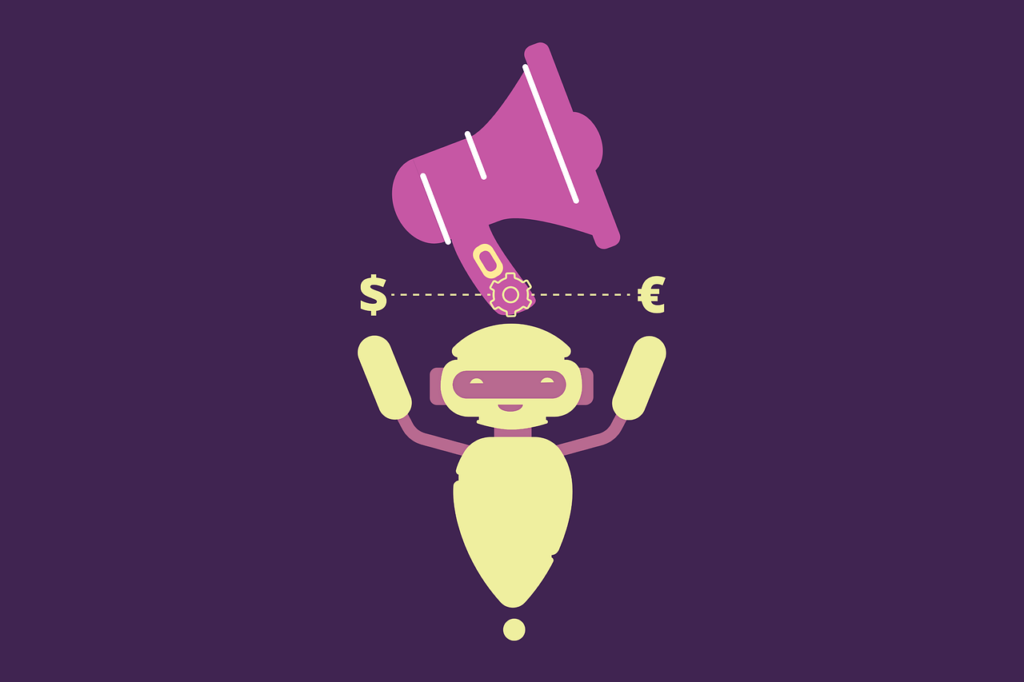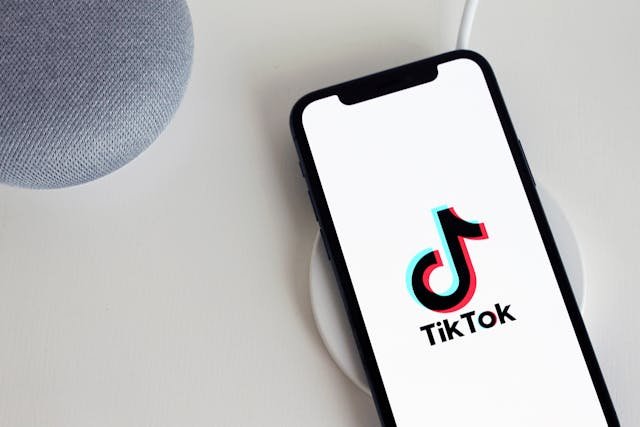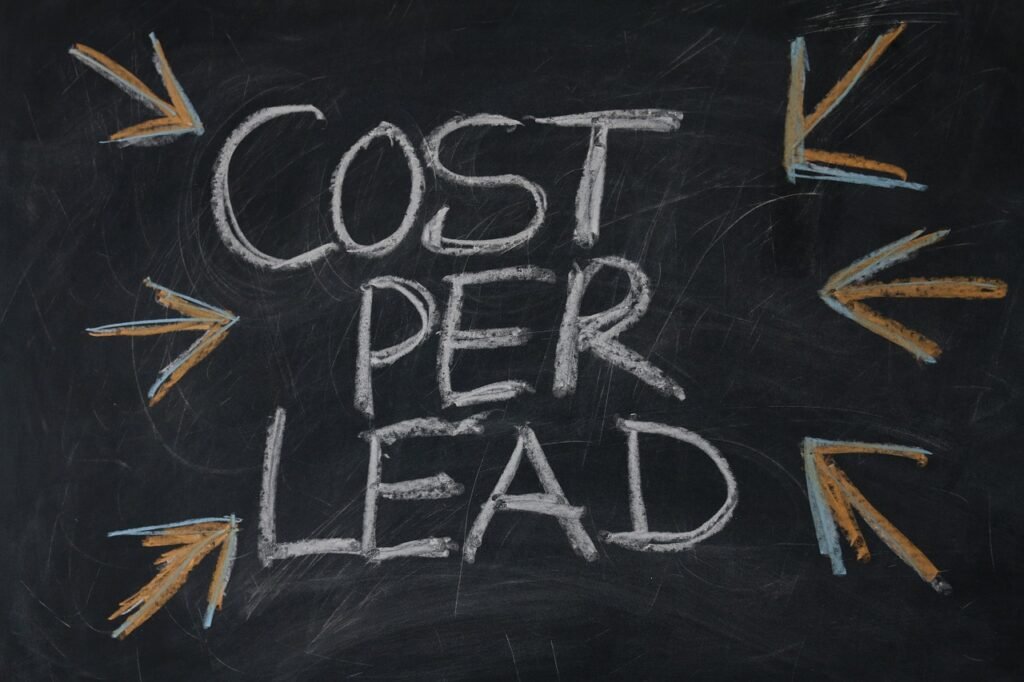In digital marketing, speed matters. When sales cycles drag on, marketing budgets stretch thin, customer interest cools, and your ROI suffers. Slow sales cycles mean that customers are taking longer to decide, which keeps revenue in limbo and ties up resources that could be used elsewhere.
The good news? Speeding up the sales process doesn’t mean forcing customers into quick decisions. It’s about removing obstacles and guiding them to make informed decisions faster. In this article, we’ll explore how slow sales cycles can harm your ROI and look at practical, actionable ways to reduce friction, shorten the cycle, and maximize returns.
1. Understanding the Problem: Why Slow Sales Cycles Hurt ROI
A slow sales cycle is a ticking cost. When prospects linger in the pipeline, each day spent nurturing, following up, and marketing to them adds to your acquisition costs. These slow conversions mean a longer time before you see a return on your marketing spend, which dilutes ROI.
When customers take too long to decide, it can mean:
- Higher Acquisition Costs: The longer it takes to convert a lead, the more you spend nurturing them.
- Lower Team Efficiency: Sales teams get bogged down with long leads, limiting time for new, high-potential prospects.
- Missed Revenue Opportunities: Delays mean lost revenue, especially if leads go cold or choose competitors instead.
Speeding up your sales cycle doesn’t mean rushing the customer. It’s about optimizing the process and creating a smoother path from awareness to purchase.
Action Insight: Start by tracking your current sales cycle length. Knowing the average time it takes to convert leads helps identify where delays may be happening. Use this data as a baseline to measure improvements as you implement cycle-speeding strategies.
2. Identifying Bottlenecks in the Sales Funnel
The first step to speeding up the sales cycle is understanding where prospects are getting stuck. Are they spending too long researching? Do they hesitate at the proposal stage? Each bottleneck represents a point of friction that slows down progress.
Common bottlenecks include:
- Top-of-Funnel Hesitation: Leads are interested but need more information or reassurance to proceed.
- Middle-of-Funnel Stalls: Prospects linger in the consideration phase without moving to purchase.
- Bottom-of-Funnel Hold-Ups: Leads are close to buying but need final reassurance, clarity on pricing, or a quicker response to close.
Action Insight: Use analytics to identify drop-off points within your sales funnel. Look for stages where leads tend to stall or where conversion rates drop, and focus on removing friction at these specific points.
3. Streamlining Lead Qualification for Faster Targeting
A slow sales cycle often starts with misaligned lead targeting. If unqualified leads enter your funnel, they either drop off later or require extra time to nurture—wasting valuable resources. Streamlining your lead qualification process ensures that only high-potential leads enter the sales cycle, accelerating the journey to conversion.
Implementing clear lead scoring criteria helps identify prospects who are most likely to convert, focusing resources on those who are a good fit. This approach shortens the time spent on leads that aren’t ready or are unlikely to buy.
Action Insight: Set up a lead scoring model to prioritize high-intent prospects. Use criteria like engagement level, demographics, and purchase intent to rank leads. By focusing on well-qualified leads, you’ll see shorter cycle times and higher ROI.
4. Improving Content Alignment with the Customer Journey

A significant reason for slow sales cycles is that prospects don’t have the information they need at each stage of their journey. If they have to search for answers, wait for follow-ups, or clarify key details, they’re likely to stall. By aligning your content to the customer journey, you provide the right information at the right time, allowing them to move forward with confidence.
For instance, top-of-funnel content like blogs and videos can educate and build awareness, while middle-of-funnel assets like case studies and testimonials offer social proof. At the bottom of the funnel, detailed product comparisons or demos can help finalize decisions.
Action Insight: Map out your customer journey and create targeted content for each stage. Ensure that content is readily accessible and answers key questions prospects might have. This alignment reduces hesitation, keeping prospects moving smoothly through the funnel.
5. Implementing Automation to Maintain Momentum
Manual processes can slow down sales cycles, especially if follow-ups, nurturing, or proposal generation rely on human intervention. Automation can bridge these gaps by ensuring timely engagement, nurturing, and personalized follow-ups without overwhelming your team.
For example, automated email sequences can nurture leads over time, while CRM reminders ensure that no lead goes too long without contact. These systems keep the conversation alive without requiring constant hands-on management, reducing delays and keeping prospects engaged.
Action Insight: Set up automated email workflows for leads at each stage of the funnel. Automate follow-ups, reminders, and content delivery based on engagement triggers. By keeping prospects engaged automatically, you maintain momentum and reduce the risk of drop-offs.
6. Building Trust Early to Minimize Hesitation
A common reason for long sales cycles is customer hesitation, often driven by a lack of trust or clarity. If prospects don’t trust your brand or fully understand your offering, they’re unlikely to move forward quickly. By building trust early in the cycle, you eliminate doubts and ease their decision-making process.
Use strategies like testimonials, case studies, and social proof to build credibility. Transparent pricing, clear product information, and easy access to customer support can further reassure prospects, helping them feel comfortable moving forward without hesitation.
Action Insight: Incorporate trust-building elements early in your marketing materials. Display testimonials, reviews, and success stories prominently on your website and in sales materials. Clear, accessible information and a trustworthy online presence encourage faster decision-making, speeding up the sales cycle.
7. Shortening the Proposal and Negotiation Phases

Lengthy proposal or negotiation phases are common causes of slow sales cycles. When proposals are too detailed, complicated, or vague, prospects may delay their decision while they seek clarity. Streamlining your proposals to highlight core benefits and keeping pricing clear and transparent can eliminate unnecessary back-and-forth.
For example, using proposal templates with customizable fields can speed up the process, while offering clear pricing options reduces time spent on negotiation. Quick, clear, and actionable proposals allow prospects to move forward without prolonged deliberation.
Action Insight: Simplify your proposal process by creating clear, easy-to-understand templates. Offer straightforward pricing with optional add-ons to avoid complex negotiations. The easier it is for prospects to understand and agree to your proposal, the faster they’ll convert.
8. Implementing Pre-Sales Qualification Calls
Not all prospects need the same level of nurturing. Some are ready to buy; others are just beginning their research. Conducting a pre-sales qualification call can help identify where each lead stands and what they need to move forward. This allows your team to prioritize high-intent leads and tailor outreach based on readiness to buy, effectively shortening the cycle.
For example, a short, structured call can help you gauge a lead’s budget, decision-making timeline, and pain points, allowing you to determine whether they’re a fit before investing time in a long sales process.
Action Insight: Set up a brief pre-sales qualification call for new leads. Ask targeted questions to understand their needs, budget, and timeline. This initial call allows you to focus on high-potential leads and offer tailored solutions, speeding up the process.
9. Enhancing Collaboration Between Sales and Marketing
Misalignment between sales and marketing teams can lead to longer sales cycles. When marketing isn’t aware of what sales need or vice versa, leads can receive mixed messages or miss key information. A strong collaboration between sales and marketing ensures consistent messaging and faster movement through the funnel.
For instance, marketing can provide content that sales reps can use to address specific objections, while sales can share insights on lead quality and behavior that marketing can use to refine targeting. This alignment creates a smoother journey for prospects, reducing the time they spend in each stage.
Action Insight: Schedule regular meetings between sales and marketing to review lead quality, messaging, and campaign performance. Encourage open feedback and collaboration, ensuring that both teams work together seamlessly to move leads through the funnel efficiently.
10. Using Data-Driven Insights to Optimize Every Stage
Data can reveal valuable insights about where prospects slow down in the sales cycle. Advanced analytics and CRM systems provide a wealth of information on lead behavior, conversion rates, and engagement patterns. By analyzing this data, you can pinpoint weak points and optimize each stage of the cycle.
For instance, if data shows that prospects frequently drop off after viewing your pricing page, it may indicate a need to clarify value or offer reassurance at this stage. By using data to guide improvements, you make the journey faster and smoother for prospects.
Action Insight: Use CRM and analytics tools to monitor key metrics at each stage of the funnel. Track engagement rates, conversion rates, and drop-off points, and use these insights to identify and address bottlenecks. Regularly optimizing based on data ensures a faster, more efficient sales process.

Related: Check out our free SEO suite

11. Implementing a Self-Service Option for Qualified Leads
Many qualified leads prefer a self-service option, where they can access information, schedule demos, or complete purchases without the need for lengthy discussions. Offering a self-service solution for these leads can speed up the sales cycle and reduce the workload for your sales team, freeing them to focus on high-touch interactions.
For example, giving qualified leads the option to schedule their own demo or access a product trial cuts down on back-and-forth communication and lets them move forward at their own pace.
Action Insight: Consider adding a self-service option for qualified leads, such as a demo booking tool or automated product trial signup. Self-service options empower leads to move forward without waiting on sales responses, reducing cycle time and enhancing customer experience.
12. Creating Urgency with Limited-Time Offers
One of the simplest ways to encourage faster conversions is to create urgency. Limited-time offers, exclusive deals, or time-sensitive discounts can encourage prospects to act quickly rather than dragging out their decision. These incentives can provide the extra push some leads need to move forward.
For example, offering a discount for leads who sign within a specific timeframe or providing a free add-on for a limited period can prompt hesitant leads to take the next step.
Action Insight: Introduce limited-time offers or exclusive deals to create urgency for leads in the middle or end of the funnel. Ensure these offers are genuinely time-sensitive and relevant, so they feel authentic rather than gimmicky. Creating urgency motivates quicker decision-making and shortens the sales cycle.
13. Simplifying the Decision-Making Process
Complex buying decisions tend to lengthen the sales cycle. When a product or service has too many options, features, or complicated pricing structures, prospects may feel overwhelmed and delay their decision. By simplifying the decision-making process—whether through clear pricing, product bundles, or curated recommendations—you can make it easier for prospects to make a confident choice.
For example, offering a “Most Popular” or “Best Value” package signals a clear choice that appeals to many buyers. Additionally, providing a product comparison guide that quickly highlights the main differences between options can help undecided prospects find the best fit for their needs.
Action Insight: Review your product offerings and consider simplifying choices, either through curated packages or streamlined pricing. Use visuals or quick comparison guides to break down complex information, helping prospects make informed decisions faster. A simplified decision process speeds up conversions, directly benefiting your ROI.
14. Offering a Risk-Free Trial or Money-Back Guarantee

One of the reasons sales cycles drag on is buyer hesitation about making a commitment. For high-ticket items or unfamiliar brands, the perceived risk can be a deal-breaker. Offering a free trial or a money-back guarantee can reduce that hesitation, encouraging leads to try your product or service without fear of loss.
For example, a SaaS company might offer a 14-day free trial or a “satisfaction guaranteed” policy. These offers give prospects the chance to experience your product, build trust, and move forward with the purchase decision confidently.
Action Insight: If feasible, offer a risk-free trial or money-back guarantee for your product or service. Make the terms clear and straightforward, ensuring leads feel secure about moving forward. Reducing perceived risk accelerates the sales cycle by encouraging quicker decisions, boosting conversions and ROI.
15. Conducting Regular Follow-Ups Without Overwhelming Prospects
Follow-ups are essential in any sales process, but timing and approach matter. Frequent, overly pushy follow-ups can turn off potential customers, while too few may lead them to lose interest. Establishing a balanced follow-up strategy helps maintain engagement without overwhelming leads.
For example, a well-timed email sequence with valuable insights, reminders, and gentle calls to action can keep leads engaged. If a prospect hasn’t responded in a while, a follow-up that highlights new benefits or features may reignite their interest without feeling intrusive.
Action Insight: Set up a follow-up schedule that aligns with each prospect’s engagement level and stage in the funnel. Space out communication to maintain interest and offer valuable insights without coming across as too persistent. A balanced follow-up strategy keeps prospects moving forward at a comfortable pace, shortening the cycle naturally.
16. Educating Your Sales Team on Common Objections
Slow sales cycles often stem from prospects who are hesitant due to unanswered questions or specific objections. By preparing your sales team to address common objections proactively, you equip them to handle these barriers effectively, helping prospects overcome doubts and move forward faster.
For instance, if a common objection is price, your sales team can be ready to explain the product’s value or share a case study that demonstrates ROI. Having clear, pre-prepared answers to these objections can shorten the conversation and speed up the decision-making process.
Action Insight: Create a list of common objections and train your sales team on how to address each one. Provide them with data, testimonials, and success stories to help counter doubts. A prepared sales team can handle objections smoothly, helping to reduce the length of the sales cycle.
17. Building Strong Post-Purchase Follow-Ups to Drive Repeat Purchases

The sales cycle doesn’t end with the first purchase. By nurturing post-purchase relationships, you can reduce the sales cycle for repeat business, which is often shorter and more cost-effective. Strong follow-up strategies for existing customers encourage loyalty and promote additional purchases without requiring the same level of persuasion as initial conversions.
For instance, personalized emails thanking the customer, sharing usage tips, or offering a discount on future purchases help to foster trust. These follow-ups strengthen relationships, increasing the chances of repeat business and referrals, which ultimately boosts ROI.
Action Insight: Implement a post-purchase follow-up sequence that includes thank-you messages, usage tips, and personalized offers. Show appreciation and continue to provide value even after the sale. Nurturing existing customers reduces future cycle times for repeat business, improving ROI with each follow-up.
18. Using Video Content to Quickly Convey Value
Video content is a powerful tool for speeding up the sales cycle. People process visual content faster than text, making videos an effective way to convey key benefits, features, and value propositions. Short videos that explain your product, answer common questions, or demonstrate real-life applications can help prospects understand your offering and make faster decisions.
For example, a quick explainer video or a product demo can help clarify complex details and showcase your product’s advantages. Including these videos on landing pages or in follow-up emails offers leads a fast, engaging way to grasp the value you offer, helping to shorten their decision time.
Action Insight: Create short, impactful videos that highlight the key features, benefits, and customer success stories of your product. Use these videos at various stages in the sales funnel to give prospects the information they need quickly. Video content speeds up understanding, reduces hesitation, and moves leads along the path to purchase faster.
19. Offering Live Chat Support to Address Questions in Real-Time
Leads often hesitate because they have unanswered questions or concerns. Waiting for an email response or follow-up call can slow the decision process, leading to longer sales cycles. Adding live chat to your website provides real-time answers to prospect questions, offering immediate support that helps them progress through the funnel faster.
For instance, live chat can assist a prospect who’s confused about pricing, needs clarification on features, or wants assurance on delivery options. Quick, responsive support can address these concerns immediately, clearing obstacles and encouraging quicker decision-making.
Action Insight: Implement live chat on key pages like product pages, pricing sections, and landing pages. Train your chat agents to handle common questions effectively and guide prospects toward conversion. Real-time support offers a faster, more convenient way for leads to get answers, speeding up the sales process and increasing conversion rates.
20. Empowering Customers with Self-Assessment Tools
Self-assessment tools, such as quizzes, calculators, or assessments, allow prospects to explore their needs and see how your product or service meets them. These tools empower leads to engage with your brand actively, helping them determine fit faster and increasing their readiness to buy.
For example, a “Which Product is Right for You?” quiz or an ROI calculator for B2B services gives prospects a hands-on experience and helps them see the value your product can bring to their specific situation. Self-assessment tools are particularly helpful for complex products, where customers may need extra guidance to understand what best suits their needs.
Action Insight: Create interactive self-assessment tools that align with your product’s benefits. Place these tools on key landing pages or send them in follow-up emails. Interactive tools provide a personalized experience that empowers prospects to make faster, informed decisions, reducing the sales cycle length and boosting ROI.
Final Takeaways: Creating a Fast, Efficient Sales Cycle for Higher ROI
A slow sales cycle is a costly problem, but it’s also an opportunity. By identifying bottlenecks, leveraging automation, simplifying decision-making, and providing real-time support, you can transform your sales cycle into a faster, more efficient process that enhances your ROI. Remember, speed doesn’t mean rushing your prospects—it means giving them a clear, engaging path to make confident decisions without unnecessary delays.
Whether it’s through automating follow-ups, creating targeted content, or adding real-time support, each tactic helps remove friction and keep prospects moving forward. When your sales cycle is smooth and efficient, you not only improve ROI but also create a more satisfying experience for your customers, building stronger relationships and setting the stage for long-term growth. By implementing these strategies, you can turn a slow sales cycle into a dynamic, ROI-boosting engine that fuels your business success.
READ NEXT:
- Are Vanity Metrics Killing Your Marketing Efficiency? Here’s What to Track Instead
- Pinpointing Digital Marketing ROI: Why Your Metrics Aren’t Telling the Full Story
- Unlocking Real ROI in Digital Marketing: The Hidden Costs Draining Your Budget
- How Misaligned Marketing Funnels Are Blocking Your ROI Potential
- Best Digital Marketing Agency In Santa Ana, California
- Best Digital Marketing Agency In San Francisco, California






















Comments are closed.